Plants for shade
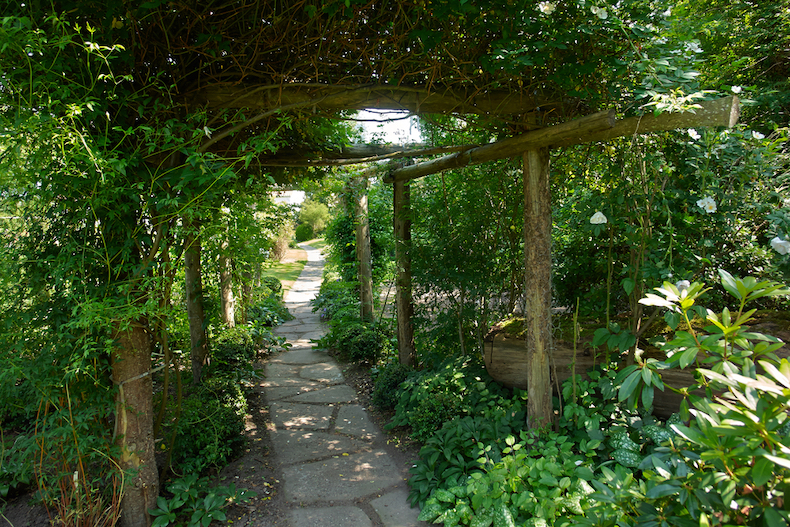
There are lots of plants that love a sheltered and shady spot in the garden
Image: Ron Zmiri/Shutterstock
Most gardeners have at least one dark or shady spot in their garden. Shade can be difficult for plants as it creates a cool environment and is often coupled with extremes of dry or very damp soil. However, there are plenty of shade loving plants and shrubs that tolerate these low-light conditions so it doesn't need to remain bare for long.
Top tips for designing a shady garden
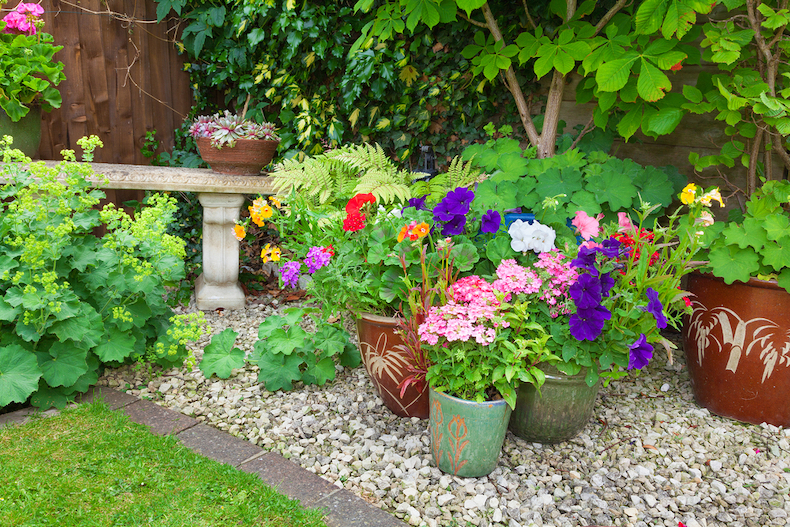
Light gravel instantly brightens a shady corner
Image: Steve Cymro/Shutterstock
Shady corners needn’t be left bare. Here are some of our top tips to help you make the most of this space.
- Provide more light: Got a tree that’s casting shade? Try removing the bottom layer of branches to raise the canopy and allow more light through.
- Brighten up the area: Pale stones, gravel, paving slabs or even outdoor mirrors reflect light and immediately lift the look of a gloomy area. A pond or water feature is also a good way to reflect light and create interest. Painting walls, sheds or fences with a pale colour also brightens the space.
- Choose wisely: Use plants with light or colourful foliage and flowers to lift your planting scheme. These will stand out in a shady area.
- Use texture: Make the area more eye-catching by incorporating different leaf shapes such as ferns, hostas and grasses with your flowering plants.
- Lawn type: If you want a lawn, make sure you choose a seed mix or turf that’s suitable for shady areas.
Types of garden shade
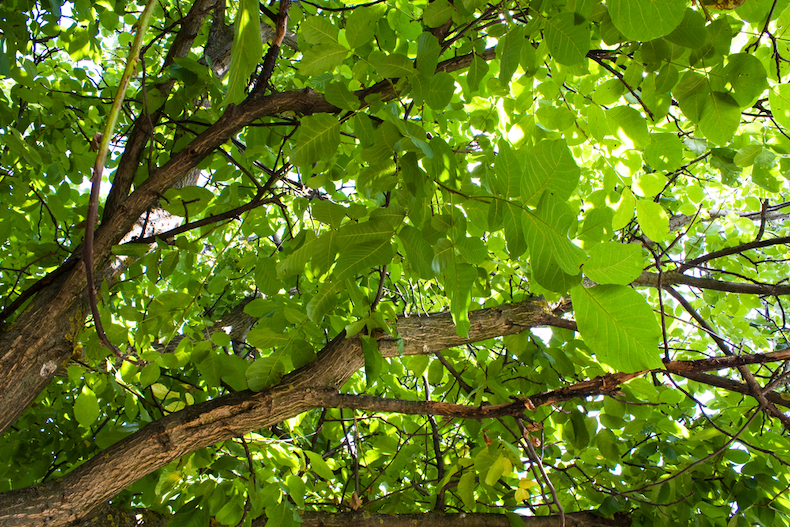
A garden under a tree canopy is likely to be in "dappled shade"
Image: Severe/Shutterstock
In order to grow plants that thrive in the shade, you need to choose one that is suitable for your particular conditions. In short: you need to understand the type of shade in your garden.
At the top of the list, there’s “full sun”, which is just what you’d imagine – a spot in the garden that gets more than six hours of sun during the day (at midsummer). This moves down through:
- Light shade (open to the sky, but not getting direct sunlight)
- Semi-shade (some direct sun at midsummer)
- Dappled shade (diffused light, such as the kind that comes through a canopy)
- Moderate shade
- Deep shade (under dense tree cover)
In addition to the amount of shade your garden gets, you’ll also need to think about whether the ground is dry or wet in order to choose the best plants.
How to deal with dry shade
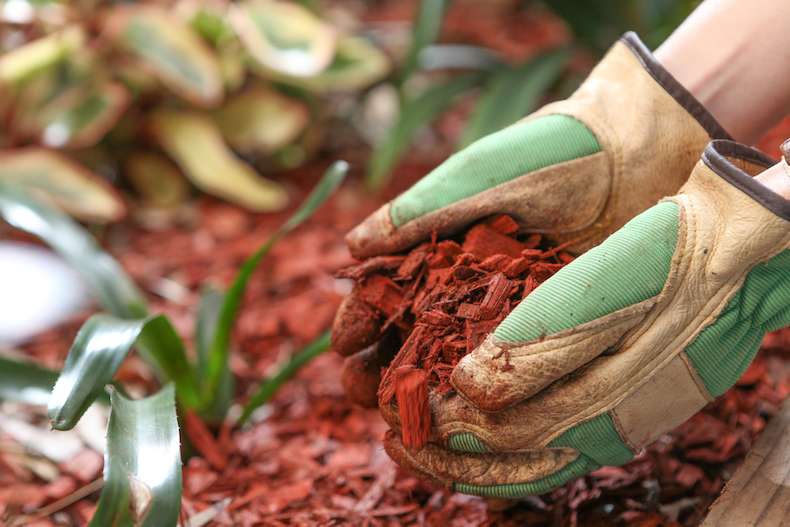
Coloured wood chips make a good mulch for areas of dry shade
Image: OzCameraman/Shutterstock
Dry shade often occurs in urban gardens. Usually, it’s the kind of shade found at the base of walls that face away from the direction of the wind, meaning the ground is sheltered from the rain. Dry shade also occurs beneath large trees with shallow roots. The leaves prevent rain reaching the ground and the soil moisture is further depleted by the shallow root system of the tree. These problems may be further exacerbated if your soil is sandy or shallow and chalky.
The most important thing to do before planting is to improve your soil’s ability to hold water. You can do this by digging in lots of organic matter (such as well-rotted manure or compost) during the spring or autumn. It’s also worth adding mulch around the base of your plants after the soil is damp from seasonal rainfall (also in the spring and autumn). Suitable mulches include organic matter, decorative stones, gravel or bark chippings.
Another trick is to create a wide planting hole and line it with perforated polythene. Mix the excavated soil with well-rotted manure or compost before backfilling the hole. The polythene should help retain more water for your plants. Remember that new plants won’t have an established root system so will need constant watering in their first season.
How to deal with damp shade
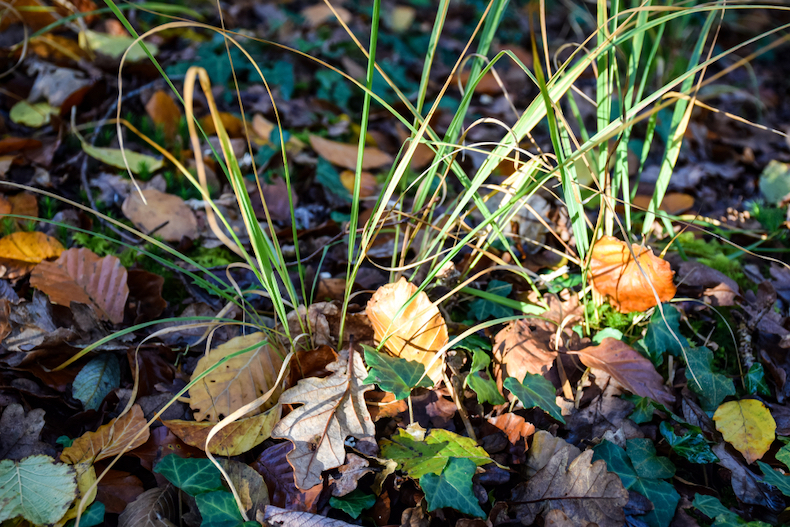
Damp shade is often found in woodland, or in gardens near water
Image: James Sedgemore/Shutterstock
Damp shade naturally occurs in areas of woodland or forest where the cool, moist environment is ideal for foliage plants such as ferns and hostas. In gardens, these conditions may occur near water or in areas with clay soil.
As with dry shade, the most important thing to do before planting is to improve your soil by digging in plenty of organic matter, such as well-rotted manure or compost. This will improve drainage, which is particularly helpful if you have heavy clay soil. It’s also worth applying a mulch of organic matter around the base of your plants every year in the spring. This will break down over time and further improve your soil structure.
Best shrubs for shade
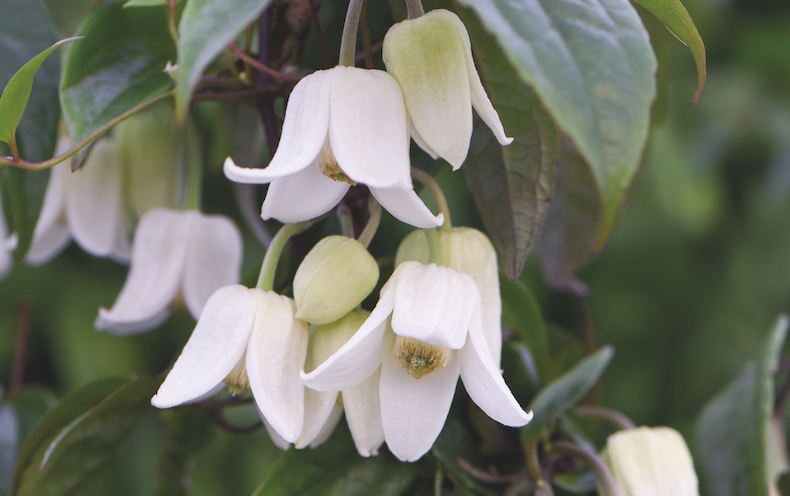
Clematis is a good choice for growing up a shady wall.
Image: Clematis urophylla 'Winter Beauty' from Thompson & Morgan
There are lots of shrubs that grow equally well in areas of dry or damp shade including Mahonia, the non-fussy Symphoricarpus (Snowberry), Viburnum and Sarcococca (Sweet Box).
For dry shade, you can plant:
- Cotoneaster horizontalis – a deciduous, resilient choice
- Pyracantha(Firethorn) is another hardy choice
- Eleagnus x ebbingei (Oleaster)
- Garrya elliptica (Silk-tassel bush)
- Hypericum calycinum (St John’s Wort/Aaron’s Beard)
- Osmanthus delavayi
- Chaenomeles x superba (Japanese Quince)
For damp shade, you can plant:
- Aucuba
- Buxus sempervirens (Common Box)
- Camellia
- Fatsia japonica (Japanese Aralia)
- Hydrangea
- Skimmia japonica
Best climbing plants for shade
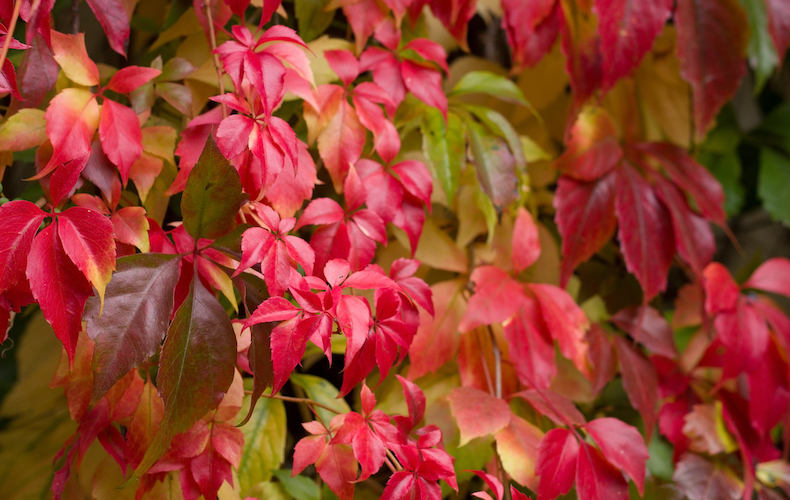
Some varieties of Virginia Creeper thrive in shade and provide stunning autumn colour
Image: Parthenocissus quinquefolia from Thompson & Morgan
Climbers aren’t well-suited to shade, per se, but there are some that can be used, including several varieties of clematis, like the Clematis armandii. Some of these will require support wires or a trellis in order to climb whereas others naturally cling to a surface, like Hedera helix (ivy).
If you’re looking for something that can handle areas of deeper, dry shade, Parthenocissus quinquefolia (Virginia Creeper) is a fantastic choice. The 'Troki Red Wall' variety is a particularly popular low maintenance option: leafy, rich, green vines appear quickly in the spring and turning a deep, rich red at the end of summer. The tough and evergreen Euonymus fortunei (Winter Creeper) and even some varieties of Honeysuckle can also handle dry shade.
Ivy, climbing hydrangeas such as Hydrangea petiolaris and Akebia quinata (Chocolate Vine), meanwhile, are happier in damp shade.
Best bulbs for shade
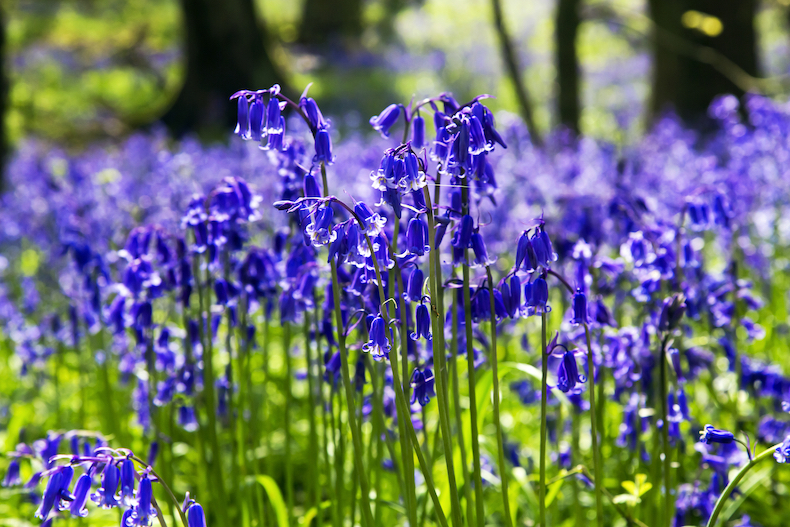
Bluebells are a beautiful addition to any garden, growing well in areas of shade
Image: English Bluebells from Thompson & Morgan
As you’ll no doubt be aware from woodland walks, there are some bulbs, like English Bluebells and Snowdrops that burst to life in areas of shade. While common in the woods, they work just as well in gardens with varying degrees of dry shade, as do some varieties of Cyclamens and Anemones.
If yours is a garden with damp shade, never fear. The astonishing hardy perennial, Cardiocrinum (Giant Lily), will grow well (much to the delight of pollinating insects), along with Eranthis (Winter Aconite). In addition to being a virtually zero-maintenance addition to your garden, Eranthis is a fantastic springtime partner to Snowdrops and Bluebells, creating a carpet of pretty yellow flowers.
Best annuals and biennials for shade
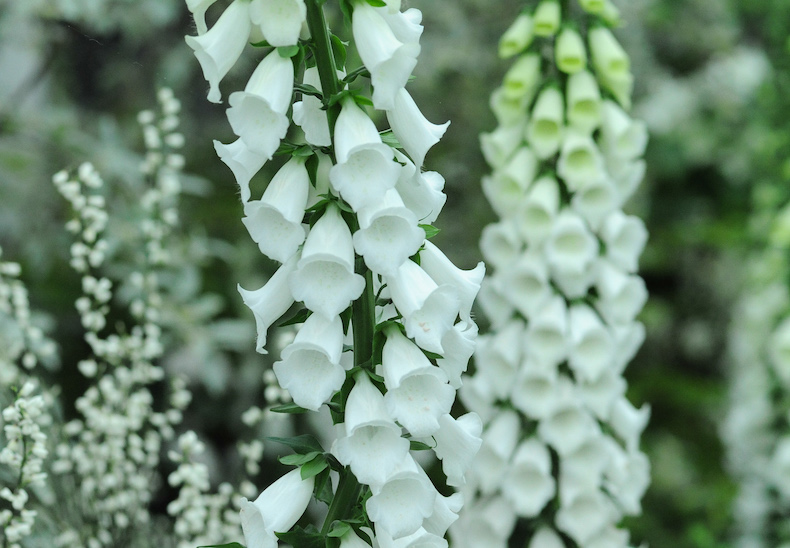
Foxgloves love shade and attract wildlife
Image: Foxglove 'Alba' from Thompson & Morgan
Digitalis purpurea (Foxgloves) and Lunaria annua (Honesty) are both stunning additions to any garden that prosper in areas of dry shade. Both plants are nectar-rich, attracting lots of wildlife, and easy to grow. Honesty is even self-seeding.
If your garden is a little more damp, the best things to grow for a pop of colour are:
Best perennials for shade
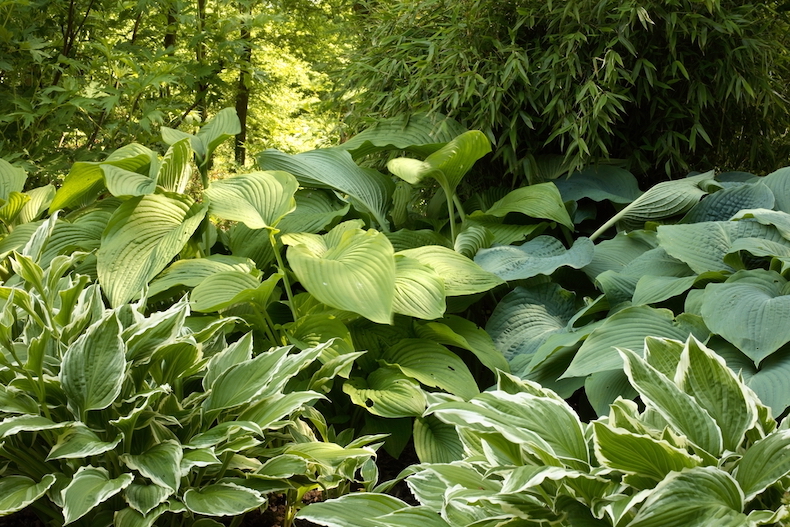
Hostas are perennials that are well-suited to shade
Image: Shutterstock
Perennials do particularly well in the shade, and you'll find a huge variety for darker areas of your garden. Some, like Bergenia cordifolia (Elephant’s Ears) and Convallaria (Lily-of-the-Valley) work equally well in damp or dry shade. Some you’ll need to pick according to the conditions in your garden.
For dry shade, you can plant:
- Alchemilla mollis (Lady’s Mantle)
- Brunnera macrophylla (Siberian Bugloss)
- Dicentra (Bleeding Heart)
- Dryopteris filix-mas (Male Fern)
- Euphorbia amygdaloides (Wood Spurge)
For damp shade, you can plant:
- Astilbe (False Goat’s Beard)
- Astrantia major (Hattie’s Pincushion)
- Carex flagellifera (Sedge)
- Geranium sylvaticum (Wood Cranesbill)
- Hosta (Plantain Lily)
- Ligustrum ovalifolium 'Aureum' (Golden Privet), which can handle even deep shade
- Primula (Primrose)
- Pulmonaria (Lungwort)
- Thalictrum (Meadow Rue)
- Uvularia grandiflora (Large Merrybells)
Best vegetables for shady gardens
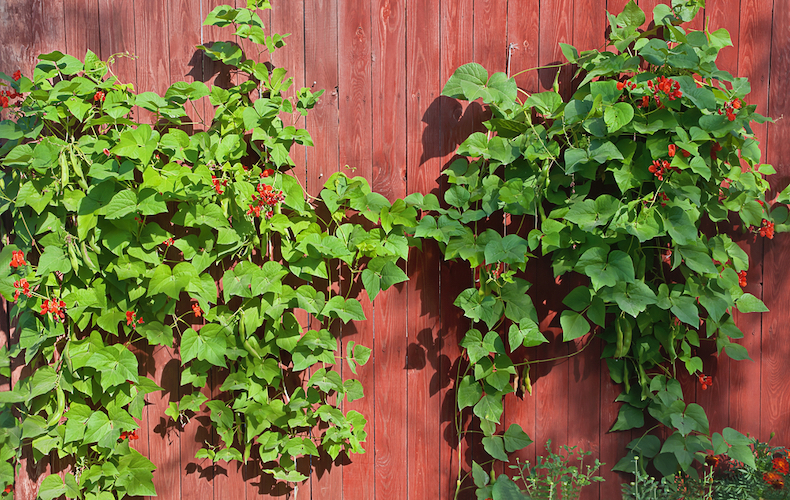
Climbing beans will grow towards the light
Image: Lamberrto/Shutterstock
Many edible plants can be grown in partial shade. Although deep shade won’t yield good results, some plants actually perform better with some shelter from intense heat and sunlight.
One thing to keep in mind is that while many fruiting plants are happy to grow in shady conditions, they will often produce a lower yield of fruit. But there are ways around this. For example, if a garden fence is casting the shade, make the most of it and grow climbing beans (which will grow towards the light) against it.
Fruit, such as strawberries, gooseberries, and rhubarb can be grown in shady spots, as well as a wide variety of herbs, including mint, parsley, lovage and chervil.
There’s an even longer list of vegetables that suit shady gardening, including:
- Peas
- Parsnips and carrots
- Beetroot
- Radishes
- Lettuce and Salad Leaves
- Spinach
- Swiss Chard
- Cabbage
- Cauliflower
- Kale
- Broccoli
We hope we’ve given you plenty of ideas for making the most of your garden’s shady spot. Find more tips and advice for growing plants in shade, including plant specific guides and pest help, over on our hub page. Happy planting!
Return to
- Flowers - 'How To' Gardening Guides
- All 'How To' Gardening Guides
- Learn from our plants for a purpose guides
Other quick links

Written by: Sue Sanderson
Plants and gardens have always been a big part of my life. I can remember helping my Dad to prick out seedlings, even before I could see over the top of the potting bench. As an adult, I trained at Writtle College where I received my degree, BSc. (Hons) Horticulture. After working in a specialist plantsman's nursery, and later, as a consulting arboriculturalist, I joined Thompson & Morgan in 2008. Initially looking after the grounds and coordinating the plant trials, I now support the web team offering horticultural advice online.Sign Up For Exclusive Special Offers




© 2024 Thompson & Morgan. All rights reserved. A division of Branded Garden Products Limited.
Sign up for exclusive offers!



